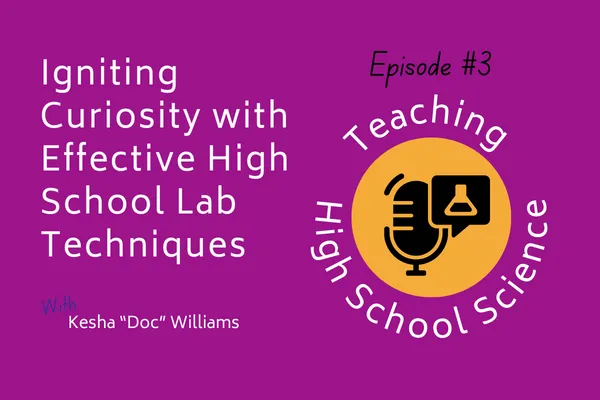On The Pod
I want to hear from you!
Join the dialog and share your comments, experiences, and questions by visiting the Facebook link in each Podcast!

E3 Igniting Curiosity with Effective High School Lab Techniques
Welcome back to Teaching High School Science! Today, we're diving into the second episode of our three-part lab series. In our last episode, we explored the pros and cons of both at-home and virtual labs. Now, we're shifting gears to discuss common strategies that work across both types of labs to ensure your students get the most out of their lab experiences.
As your host, I'm here to guide you through these strategies, whether you're facilitating hands-on experiments at home or leading virtual simulations online. Let's jump right in.
Regardless of whether you're using at-home or virtual labs, there are key strategies that apply to both.
First up, having clearly defined learning objectives is essential. As the facilitator, you need to know why the lab is being conducted and what you expect your students to learn from it. This sets the stage for guiding them effectively and preparing for any unexpected results or observations.
Next, clear instructions are crucial. Even in open inquiry labs, students need guidance on what to do with the materials at hand. Providing step-by-step instructions or modeling the lab beforehand can help students understand what's expected of them and ensure they stay focused on the concepts being explored.
Now, let's talk about questioning techniques.
Most labs can connect to multiple concepts, so it's important to help students articulate their understanding.
Whether they're at home or engaged in a virtual lab, encouraging students to explain their observations and make connections to broader scientific principles enhances their learning experience.
After completing the lab, don't forget to debrief and reflect. This step is often overlooked but is crucial for reinforcing learning and identifying areas for improvement. Discussing findings and observations helps students consolidate their understanding, while reflection encourages them to think critically about their experiences and set goals for future learning.
In summary, at-home and virtual labs are both valuable tools for deepening students' understanding of scientific concepts. By incorporating these common strategies, you can ensure that your students have engaging and enriching lab experiences, regardless of the format.
Stay tuned for our next episode, where we'll dive into some actual at-home and virtual labs. And remember, if you have any questions or experiences to share, leave your comments and questions below! Subscribe now to the Teaching High School Science podcast for more motivation and science ideas. Together, let's make high school science a journey of exploration and achievement. Until next time, remember, curiosity—it leads to endless possibilities!
All Rights Reserved 2023 - (C) TheScienceMentor.com -TM | Terms & Conditions | Privacy Policy | Disclaimers
